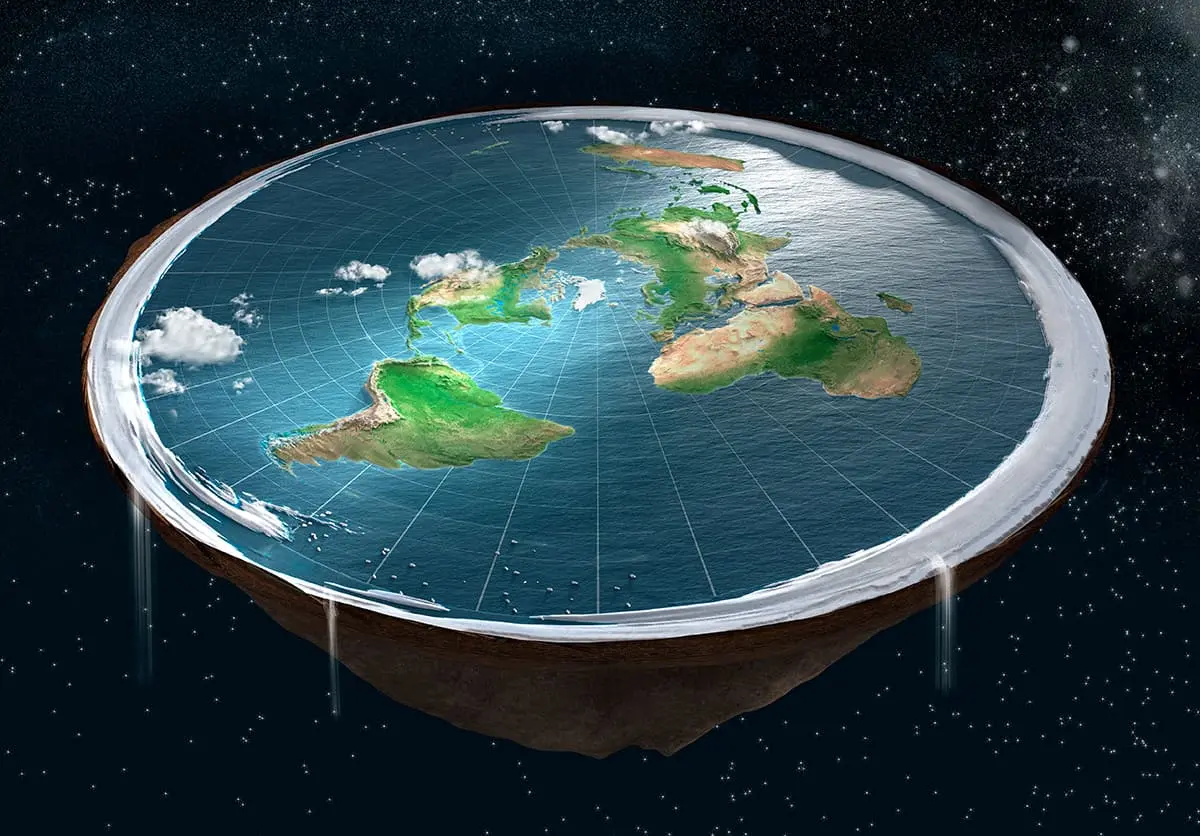The idea that the Earth is a sphere was all but settled by ancient Greek philosophers such as Aristotle (384–322 BC), who obtained empirical evidence after travelling to Egypt and seeing new constellations of stars. Eratosthenes, in the third century BC, became the first person to calculate the circumference of the Earth. Islamic scholars made further advanced measurements from about the 9th century AD onwards, while European navigators circled the Earth in the 16th century. Images from space were final proof, if any were needed.
Today’s flat-Earth believers are not, though, the first to doubt what seems unquestionable. The notion of a flat Earth initially resurfaced in the 1800s as a backlash to scientific progress, especially among those who wished to return to biblical literalism. Perhaps the most famous proponent was the British writer Samuel Rowbotham (1816–1884). He proposed the Earth is a flat immovable disc, centred at the North Pole, with Antarctica replaced by an ice wall at the disc’s outer boundary.
The International Flat Earth Research Society, which was set up in 1956 by Samuel Shenton, a signwriter living in Dover, UK, was regarded by many people as merely a symbol of British eccentricity – amusing and of little consequence. But in the early 2000s, with the Internet now a well-established vehicle for off-beat views, the idea began to bubble up again, mostly in the US. Discussions sprouted in online forums, the Flat Earth Society was relaunched in October 2009 and the annual flat-Earth conference began in earnest.



Under the Bayesian way to do science, you start off with some beliefs (”priors”) about what your trying to understand. You then devise experiments that either confirm or deny those believes. You then update your priors based on the data you see from the experiment.
A normal person might start off with, say, 70% belief that the earth is flat. They then look at some data (take an airliner around the world, look at pictures of earth taken by satellites, do some of those curvature measurement experiments, …). Each time they update their priors, and soon enough it becomes a 99.99% belief that the earth is NOT flat.
A flat earther, for some reason, starts off with a 99.99999% belief that the earth is flat, along with a 99.99999% belief that the government is trying to hide the fact from them. You show them some experiments, they might update their priors to a 99.999%. To convince them the earth is not flat, you would need a LOT of data. You might tell them to look at previous experiments done on this, but due to the 99.99999% belief that the government is lying, they would only have a 0.00001% confidence in the data reported by scientists. So it takes a lot more to convince them that the earth is not flat.
Now why did they start off with such strange priors? They’re probably conspiracy nuts. You can criticize them for that. But don’t call them unscientific if they are still doing experiments and updating their priors.